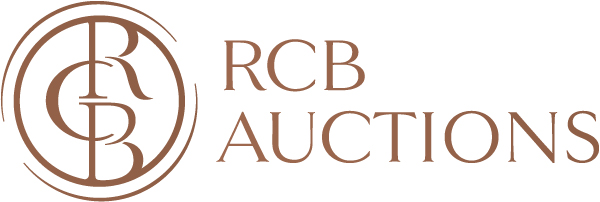Chakri Tea Set

A Chakri tea set comprising of four rounded porcelain covered teacups, two porcelain saucers painted with blooming daisies on a white ground and a round metal tray. Arranged in Thai Style without Yixing teapots. Rattanakosin Style. 19th Century. Live Auction Sale on 11 December 2021.
You might call the Chakri porcelain a Benjarong Lai Nam Thong but, an antique collector will simply call it ‘Chakri Set’ (ชุดน้ำชาจักรี). White bloomed daisies and branching flowing leaves on underglazed porcelain. The outline of each flower and leaves gilded. These are the characteristics of the celebrated Chakri pattern, named after Thailand’s ruling Dynasty. The Chakri’s flower design shows direct western influences rather than the repertory of Thai motifs on other types of Benjarong porcelain. This is because of increased European influences in the late 19th century. The Chakri porcelain was commissioned from the renowned Sèvres factory in France by King Rama V (1868-1910). Chakri porcelain was ordered in seven background colors, corresponding with each day of the week: red, yellow, pink, green, white, blue, and black. And in two special colors, silver and gold with multicolored daisies. The Chakri set is teaware, consisting of lidded porcelain cups, porcelain saucers, a teapot, and a metal tray. The porcelain teacups, brewing cups, and saucer were from France; the teapots were Yixing teapots from China and metal trays were from local blacksmiths and silversmiths.

National History
The Chakri tea set was ordered as funeral mementos for guests who attended a succession of royal cremation ceremonies in 1887. Those who received them were royal family members and court officials, so only a small number of sets exist. A rare edition is the ‘Chui Chao Fah’ set, a miniature version given to royal children. To honor the memories of the departed, the Chakri tea set is famous for bearing three historically important markings.
1. The emblem of the Chakri dynasty. The symbol is painted on top of the lidded cups and depicts a wheel and three long upward spikes resembling weapons. The Chakri name is a combination of the Sanskrit word ‘chakra’ meaning wheel, and ‘tri’ meaning three.

2. The monogram of Prince Siriraj Kakudhabhand, dated with Thai Minor Era or ‘Chula Sakarat’ 1249 corresponds to Common Era 1887. This is marked on the bottom of the cups and saucers.

3. The personal insignia of a royal member whom the set commemorates, location of the funeral, and ceremonial title are engraved or pierced on the metal tray. The tray is usually a woven style tray or an enameled Chakri pattern tray.

Chakri tea set arranged in 'Jee Bo' style. Comprising of a pair of lidded brewing cups, two lidded teacups and saucers on a round woven tray.
Thai Tea Set Arrangements
There are many ways Thais arrange a tea set for usage, royal ceremonial purposes, or Siamese altar table decorations competitions. The Chakri tea sets are arranged in one of four ways. First, the ‘Dao Lom Duen’ set loosely translated to ‘stars surrounding moon’. In the center of a round tray, a saucer sits in the middle with a small Yixing teapot representing the moon, eight small rounded lidded teacups surround the saucer forming a circle representing the stars. Second, the Thai style or ‘Chud Thai’. This is arranged on a round tray, with a pair of Yixing teapots, Chakri saucers, and four small rounded lidded teacups.
The third set is called the ‘Jee Bo’ set. This set includes a pair of big lidded cups for brewing tea, matching saucers, and four smaller lidded teacups on a round tray. The lidded cups in the ‘Jee Bo’ set are a different shape from the rounded teacups. They are formed with a slight concave curve at the edges with flaring rims. And lastly, a Chinese style arrangement or ‘Chud jīn’. This set is composed on a rectangular tray, with one ‘Jee bo’ lidded cup for brewing, a tea bowl, and four small teacups without lids placed to the sides.
Browse and bid on the Chakri Tea Set here.


